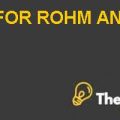
OVERVIEW:
The idea was generated back in 1942 with the merger of a number of formal autonomous petroleum firms, who were operating in the business of Pioneer Petroleum was formed in 1924 with the merger of several independent firms operating in the pipeline transportation, industrial chemical fields and refining. During the next 60 years, the company somehow managed to enter into the production of crude oil, exploration and marketing refined petroleum products via Vertical integration and into agricultural chemicals, real-estate development and plastics via Horizontal integration. The Pioneer Petroleum was reorganized back in 1985 as a hydrocarbon-based company, with a core concentration on coal, gas, oil and petrochemicals. Pioneer Petroleum was one of the primary producers of domestic petroleum liquid products and crude oil in the Alaskan region with around 60% plus production. Pioneer had an extensive marketing network in West Coast and was also one of the lowest cost refiners on the West Coast. The crude production facility in Alaska provides support to all of the crude oil for its West Coast refining and marketing operations. The synergies expected from the integration strategy is subject to the collaboration and coordination among divisions to maximize return and minimize risk. In 1990, total revenues were $15.6 billion and net income was around $1.5 billion. Variations in oil prices in the world market were a major concern for the Pioneer Petroleum. In 1990, the price of West Texas Intermediate oil during the first four months was $21.80 a barrel, and it suddenly raced to a lowest price about $15.50 in mid-June. After some wars in the Asian petroleum giants, the prices raced to more than $40 a barrel, but then again fell to $25 a barrel as the year ended. The average price of 1990 was about $24.50 a barrel.
PROBLEM STATEMENT:
The main problem the Pioneer Petroleum facing was the critical determination of a minimum acceptable rate of return on new potential future projects. The investment proposal was evaluated on Net Present value approach discounted at an appropriate discount rate or also called Weighted Average Cost of Capital (WACC). If the project generates the positive NPV, the company accepts the projects. As the issue was the determination of an appropriate discount rate. The management of the company has received two recommendations or alternative approaches to determine a minimum rate of return: A single rate or WACC based on the company’s overall performance; and a system of multiple cutoff rates rather than a single discount rate.
The members who proposed single target discounted rate considered that the lone discounted rate would help the company in evaluating corporate performance. Against the concept of the multi divisional discount rate supporters, they suggested that the single rate will be advantageous for the company in terms of the comparison with the industry’s other petroleum products manufacturers. They were also against the suggested categories of the multiple rates, as that will not hold beneficial in managing the riskiness of each project.
On the other side, the members who were supporting multi discount rates approach, argued that the single rate or company wide cost of capital was not viable as it was really difficult to calculate the risk factor involved in each division, i.e. it subsidized the higher risk divisions at the expenditure of the lower risk divisions. They also argued that the just because of the company wide cost of capital was too high for the low risky divisions of the company, too low investments were made by the investor. Similarly, in the highly risky divisions, the investors made too much investment just because of the wrong interpretation. Proponents of multiple rates argued that the Pioneer Petroleum was the only company, they have seen so far, that contributes only in the development and exploration of the petroleum products and not even thought about the transportation and marketing department.
pioneer petroleum case study solution
ANALYSIS:
As shown in the appendices, the computation which was based on a single cost of capital was calculated 1st using a Dividend growth model to calculate the cost of equity, and while in the other approach, we used using the CAPM method to estimate the cost of equity. The company uses three step model for the computing weighted average cost of capital: first, defined the proportions of the expected future fund sources; second, assigned costs to each of these sources with the help of different methods; third, calculate the cost of capital by simply multiplying each weightage to its assigned cost.......................
This is just a sample partial case solution. Please place the order on the website to order your own originally done case solution.










